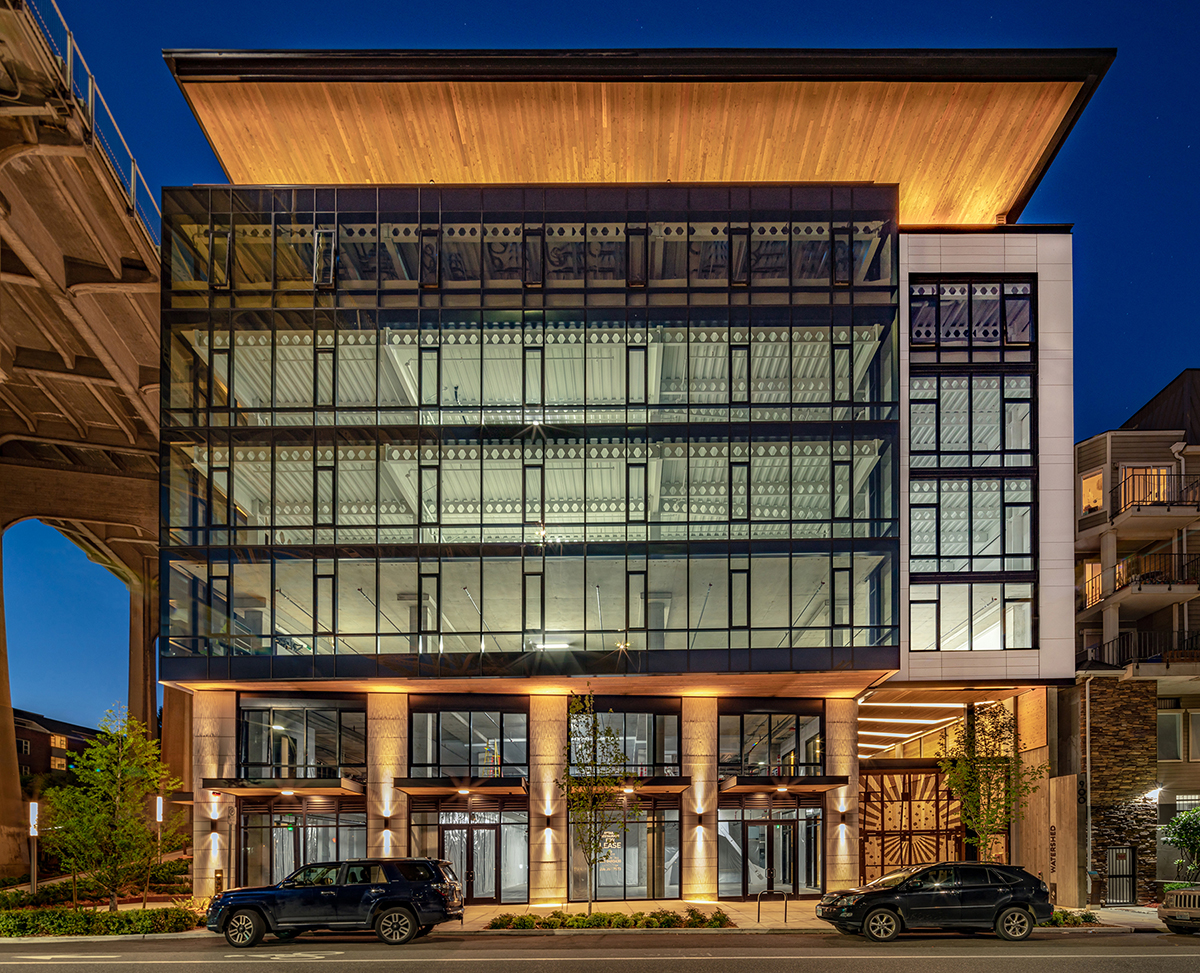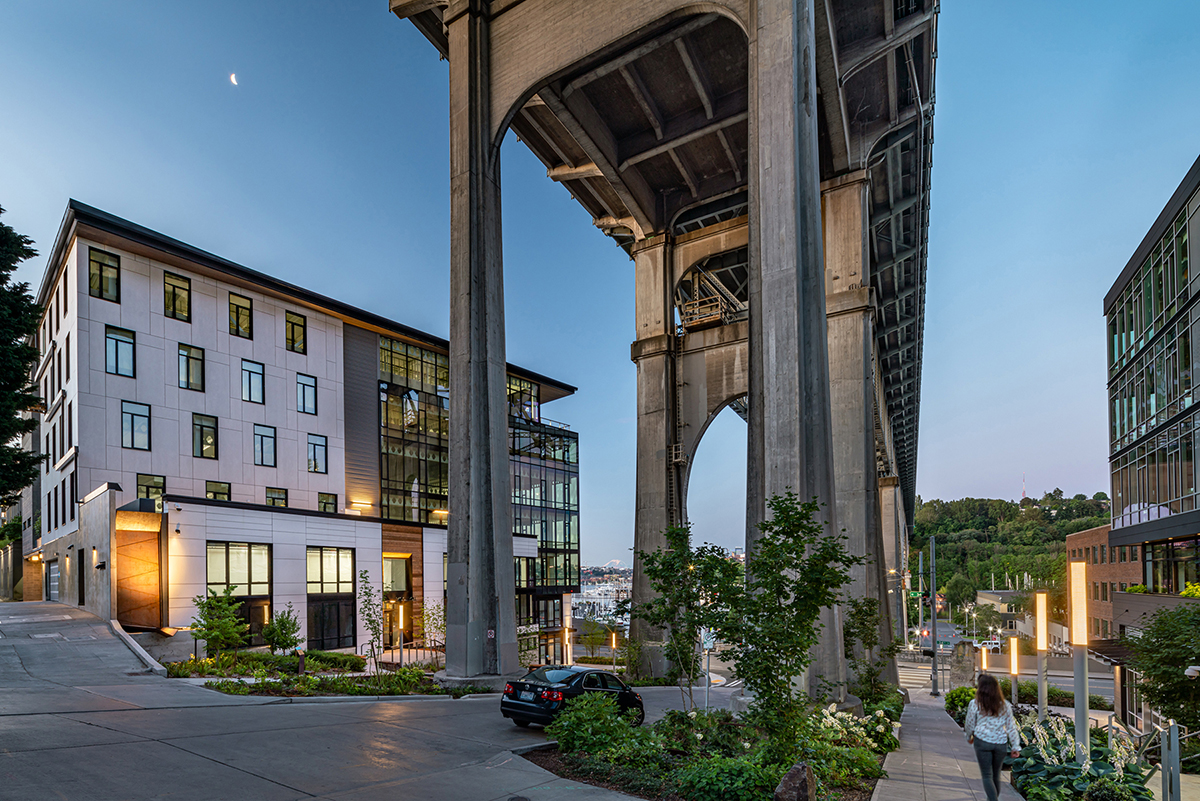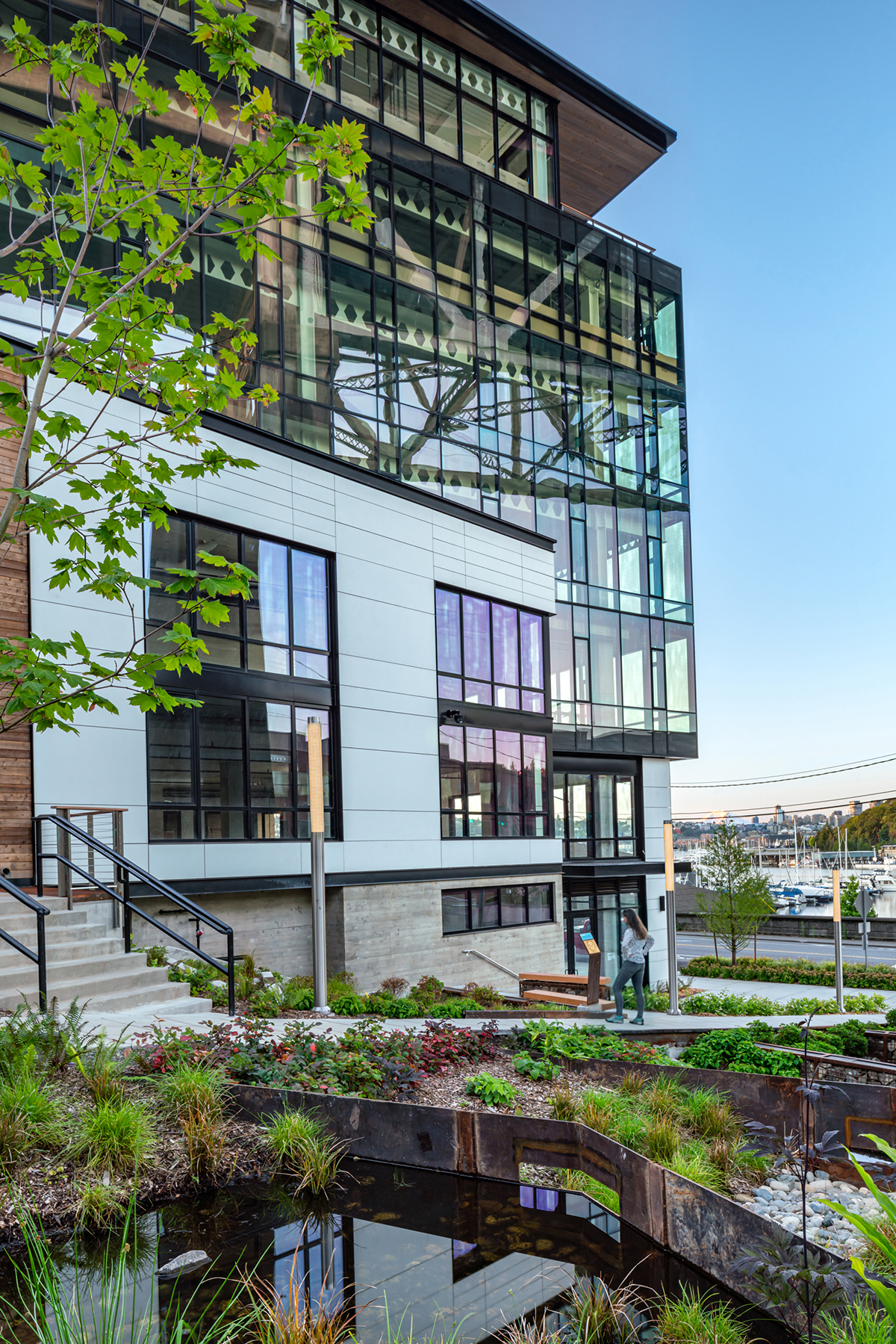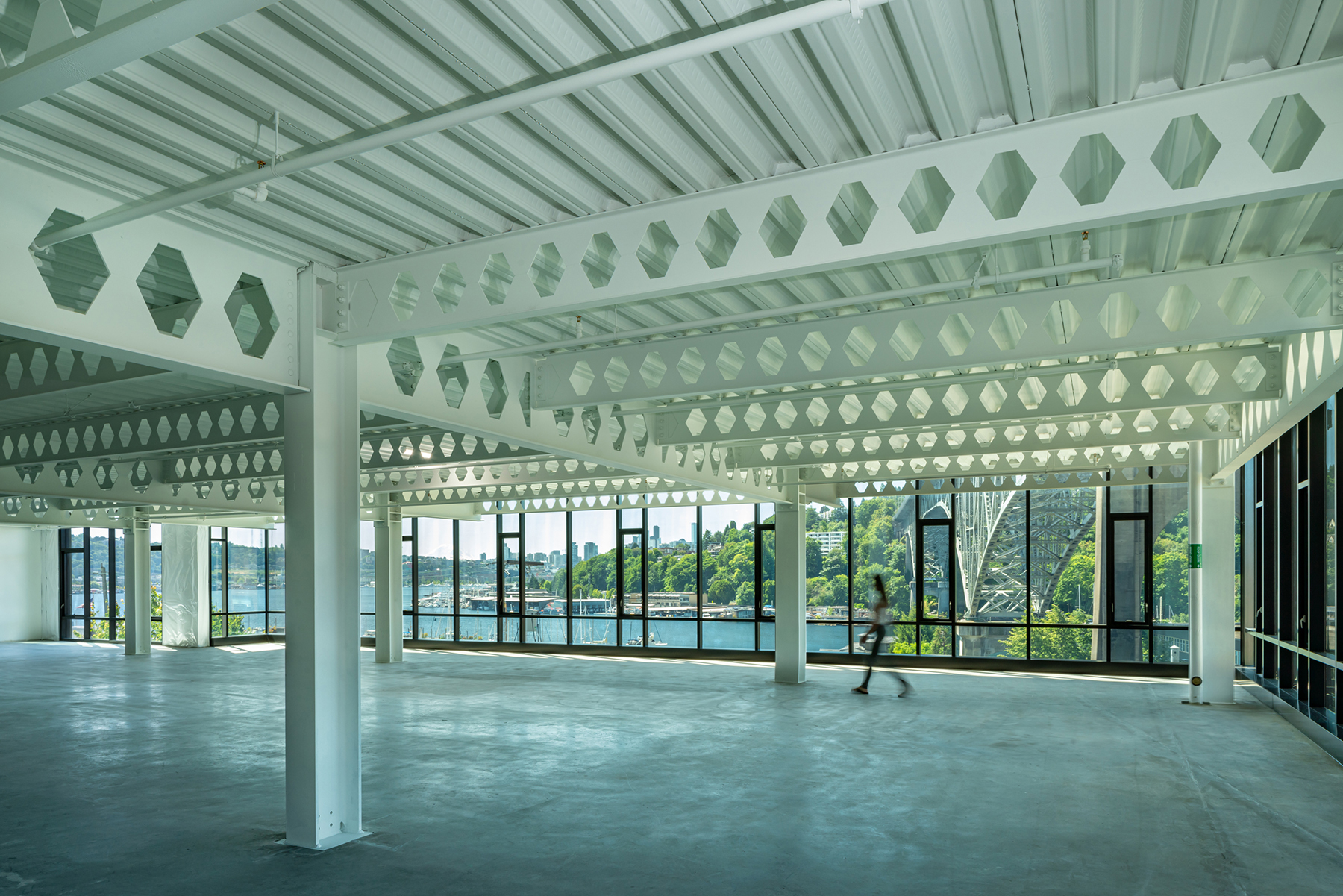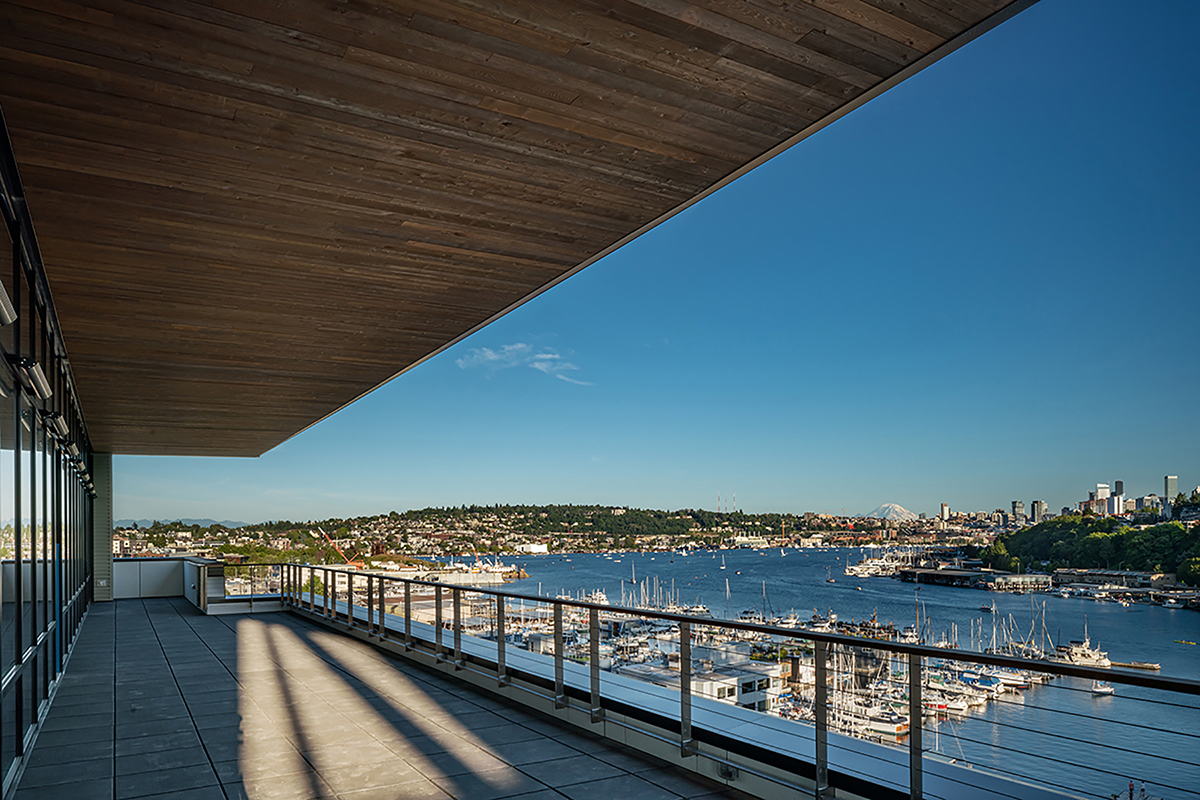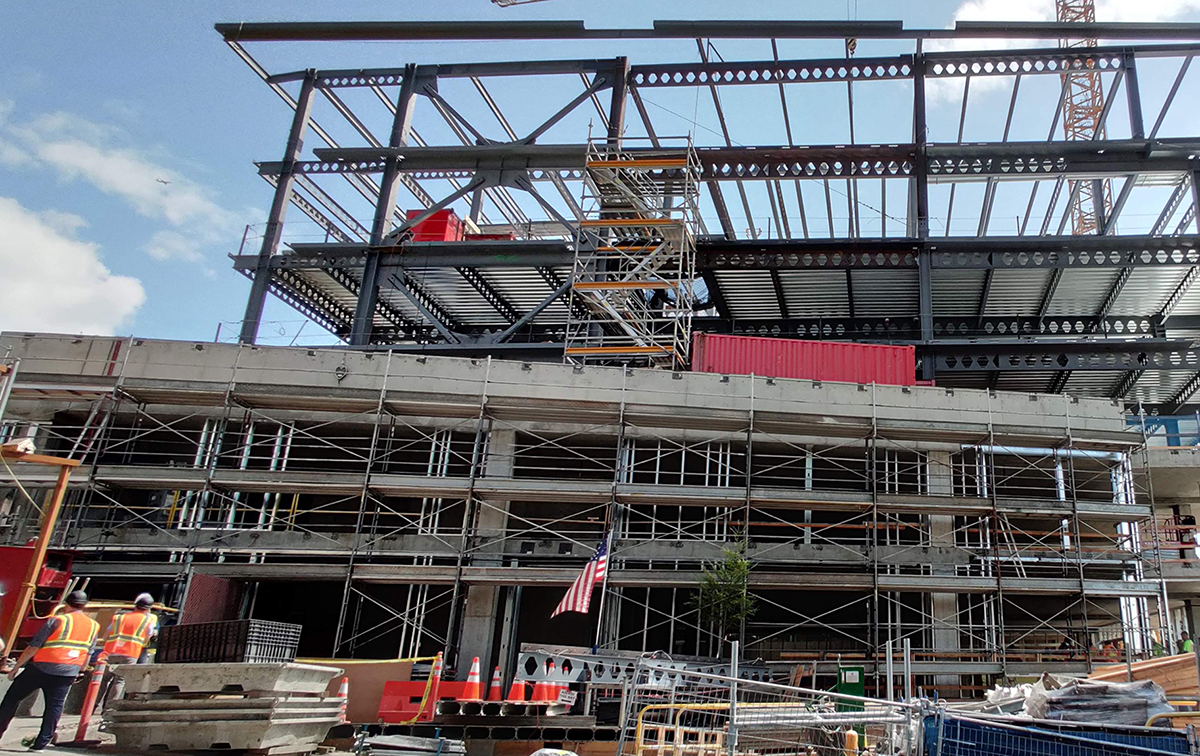AISC
Watershed Building
Merit Award - $15 Million to $75 Million
This project combines high performance and aesthetics in a design that enhances the occupant experience as well as the community. The building’s added role as a stormwater treatment plant for the adjacent bridge run-off demonstrates how architecture can effectively and creatively integrate into city infrastructure. —2021 IDEAS² Judge Wanda Lau, Editor, Technology and Practice, ARCHITECT magazine
Producing a sustainable office building to appeal to high-tech businesses was one of the main drivers for designing and constructing Seattle’s 61,000-sq.-ft Watershed Building.
The other was to be recognized by Seattle’s Living Building Pilot Program (LBPP), a prestigious green building program that measures building performance for at least 12 months after occupancy. Participating in the program gave Watershed 15% additional developable area and 20 ft of additional building height beyond the current zoning allowance for commercial office buildings. To meet the program requirements, the entire design team contributed solutions for the program’s material, place, and beauty requirements, which included that materials must be sourced from a 500-mile radius of the project site and cannot be listed on the program’s red list of harmful materials. Steel was able to contribute positively to the program’s goals, as the building includes four steel-framed above-grade levels atop three levels of cast-in-place concrete and post-tensioned concrete levels.
Structural engineer DCI Engineers considered how its designs could contribute to the project’s sustainability efforts via the framing system. The solution was in castellated steel beams, which provided an opportunity to bring in more natural light for the interior office spaces. The deeper castellated beam sections also provided better floor performance with their increased strength and stiffness. In addition, the depth of the castellated beams offers more layout framing options, thus a more flexible design to accommodate value-added requirements such as the tenant mechanical ducting, unobstructed views, and cantilevered building features. The reduced weight of the castellated beams also translated to a reduction in the seismic mass carried by the steel lateral framing system. The estimated 20% to 30% of savings in the weight of the beams resulted in smaller lateral system elements, which worked well with the desire to minimize structural impacts on the southerly lake and city view.
In addition to its structural advantages, the exposed castellated beam concept is aesthetically pleasing and gives the sense of higher ceilings, with light funneling through the hexagon cut-outs of the beams. For the Watershed Building (a Type III construction), fireproofing spray is not needed to cover these beams, so a simple coat of paint over the beams provides a clean, exposed look.
On Level 7, there is a balcony for tenants to enjoy views of nearby Lake Union’s marina waterway. In order to accommodate the required paver walking surface, the framing design incorporates a step in the castellated beams and metal deck. DCI’s engineers detailed the castellated beam connections to accomplish the stepped feature by splicing a plate girder section into the castellated beam section. Proper column locations, customized cut beams, castellation patterns (infills were required at specific locations), and precise dimensioning all worked together to provide a flawless balcony installation in the field.
The engineers used braced frames for the building’s lateral system to provide improved performance during earthquakes. To minimize the impact of the braces on building occupants’ view, they positioned an X-brace frame further inside the building layout, and the lower portions of the braced frame were integrated through the lower concrete portion of the brace frame to the foundation level. The brace frame columns were then encased with concrete.
Watershed’s location next to the Aurora Bridge gives the building an added opportunity to become a stormwater management solution. The building’s steel gutter system, landscaping, and bio-retention vault direct toxic stormwater runoff from Highway 99, which is carried by the bridge, through a downward-slope filtration system to treat the polluted water before it reaches Lake Union. Watershed can clean 400,000 gallons of stormwater annually, helping to protect the water quality for a major salmon migration route that passes through Lake Union. Throughout the public walkways around Watershed, there are educational signs for passersby to learn about the bio-retention and natural stormwater filtration processes. In addition, Watershed’s overhanging roof itself is designed for on-site rainwater harvesting, with rainwater being carried through the sculptural gutter system into an oversized steel scupper before it is stored in a 20,000-gallon concrete cistern for non-potable uses, such as the building’s low-flow toilet fixtures and irrigation options (about half of the rainwater collected on-site will be reused in the building).
Steel fabricator and detailer: Metals Fabrication Co., Inc., Airway Heights, Wash. *AISC Member* *AISC Certified Fabricator*
Structural engineer: DCI Engineers, Seattle
Architect: Weber Thompson, Seattle
General contractor: Turner Construction Company, Seattle
Owner: COU, LLC, Seattle
- Project Category: Year 2021
- Location: Seattle, WA
- Award Category: Merit Award - $15 million to $75 million
- Year Completed: 2020
- Submitting Firm: DCI Engineers
- Photo Credit: 1-5 - Built Work Photography; 6 - DCI Engineers

